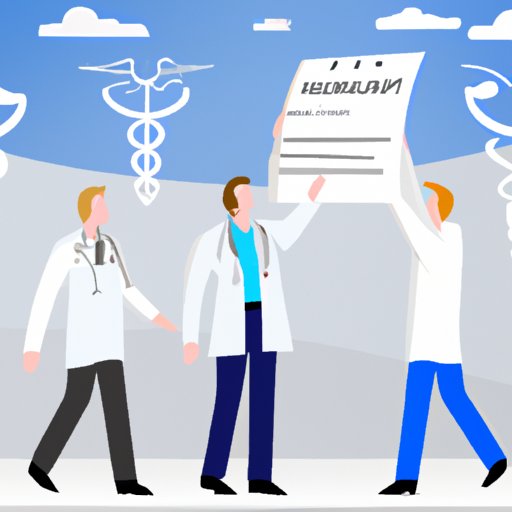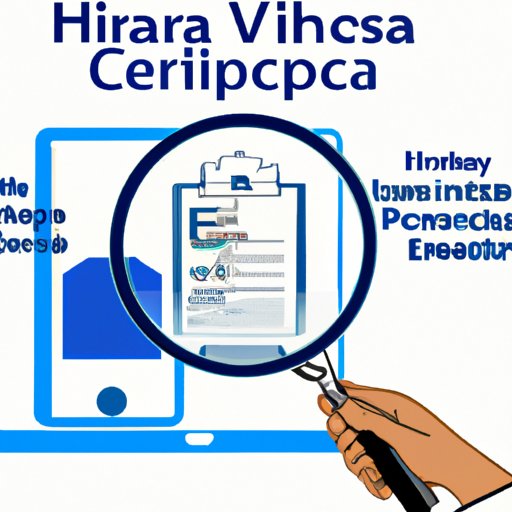
I. Introduction
As the healthcare industry continues to evolve, it’s important to understand the tools and technologies that keep it running smoothly. One such tool is the healthcare clearinghouse. In this article, we’ll explore what healthcare clearinghouses are, how they work, their benefits, and more. If you’re a healthcare provider or payer, or just interested in the inner workings of the healthcare industry, read on to learn more about this essential component of healthcare transactions and claims processing.
II. The Basics of Healthcare Clearinghouses: What They Are and How They Work
A healthcare clearinghouse is essentially a middleman between healthcare providers and payers. Their primary function is to process and standardize healthcare transactions (like claims, eligibility inquiries, and payment remittances) from different providers, enable electronic submission, and transmit them to insurance payers for processing and payment.
To ensure reliability, clearinghouses have their own communication channels and standards to help standardize various transactions and prevent data transmission issues while preserving data integrity and confidentiality in a secure electronic format. They also often provide the necessary translation, or mapping, services to ensure that transaction data conforms to payer-specific formats. Another important function of clearinghouses is to validate transactions for completeness and accuracy with respect to payer requirements before forwarding the claims to payers.
III. Streamlining Healthcare Financial Transactions: Understanding the Role of Clearinghouses
Given the complexity and scale of healthcare transactions, medical billing and claims management can quickly become overwhelming for healthcare providers. This is where healthcare clearinghouses come in, helping to streamline financial transactions between providers and payers to improve efficiency and accuracy.
Clearinghouses handle the exchange of claims and payment information between different payer systems and healthcare providers’ billing computer systems, translating the data and performing quality assurance checks to ensure that each claim is complete and accurate before it is forwarded to the appropriate payer. This reduces the number of rejected or delayed claims, which in turn saves healthcare providers time and money.
IV. Why Healthcare Providers Should Consider Using a Clearinghouse for Claims Processing
One key benefit of using a healthcare clearinghouse is the improved revenue cycle management that comes with it. Clearinghouses help providers significantly reduce denied or rejected claims by ensuring payers receive clean and uniform claims, which can speed up reimbursement, improve cash flow, and reduce write-offs and accounts receivable.
Another advantage of using a clearinghouse is that it can reduce the administrative burden on healthcare providers, ultimately allowing them to focus on patient care. Clearinghouses can provide reporting tools to help healthcare providers proactively manage their claims and payments while reducing the complexity of communicating across various technology systems.
V. The Pros and Cons of Healthcare Clearinghouses for Providers and Payers
While there is no denying the numerous benefits of using a clearinghouse in the healthcare industry, there are some drawbacks that should be considered. One potential disadvantage is the additional cost, as healthcare providers must pay for the services provided by a clearinghouse.
However, the benefits of using a clearinghouse often outweigh the costs. Clearinghouses can help providers maximize their financial performance, reduce costly errors and administrative expenses, improve claims processing times, and increase patient satisfaction through faster claim processing and reimbursement.

VI. How Healthcare Clearinghouses Protect Patient Data and Ensure HIPAA Compliance
Because they deal with sensitive patient and financial data, healthcare clearinghouses must follow strict security and compliance guidelines to ensure sensitive information isn’t exposed to external threats. All healthcare clearinghouses should ensure regulatory compliance with the Health Insurance Portability and Accountability Act (HIPAA) and other relevant privacy and data security regulations such as National Institute of Standards and Technology (NIST) guidelines and SOC 2 certification.
To ensure patient data privacy and confidentiality, clearinghouses should meet encryption standards for data transmission and storage, enforce strong authentication and access controls, and monitor for unauthorized access and data breaches. They should also provide regular employee training on HIPAA compliance and the latest industry security standards.
VII. Exploring the Future of Healthcare Clearinghouses: Emerging Trends and Technologies
As with all aspects of the industry, healthcare clearinghouses will continue to evolve with the introduction of new technologies and practices. Some of the latest trends in the industry include implementing artificial intelligence and machine learning practices to increase accuracy and reduce manual processing for claims management, leveraging blockchain technology to secure patient data further, and integrating application programming interfaces (APIs) to optimize data exchange and integrate healthcare systems seamlessly.
As these technologies continue to mature, clearinghouses will become increasingly efficient and streamlined. This will ultimately lead to more savings for healthcare providers and payers and a better patient experience.
VIII. Conclusion
Healthcare clearinghouses are crucial to the functioning of the healthcare industry. They ensure standardization, accuracy, and efficiency in healthcare transactions while ensuring compliance with strict privacy and data security guidelines. Using a clearinghouse can benefit healthcare providers and payers alike, leading to better revenue cycle management, faster claim processing, and lower administrative costs. With new technologies emerging in the industry, we can expect to see even more benefits and improvements to healthcare clearinghouses in the years to come.




